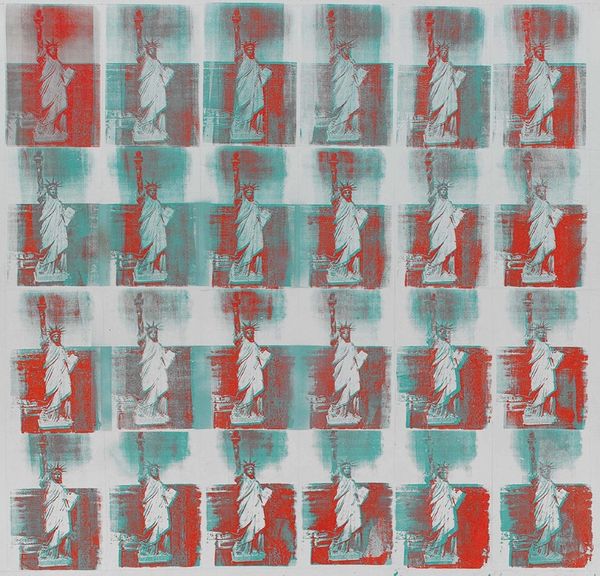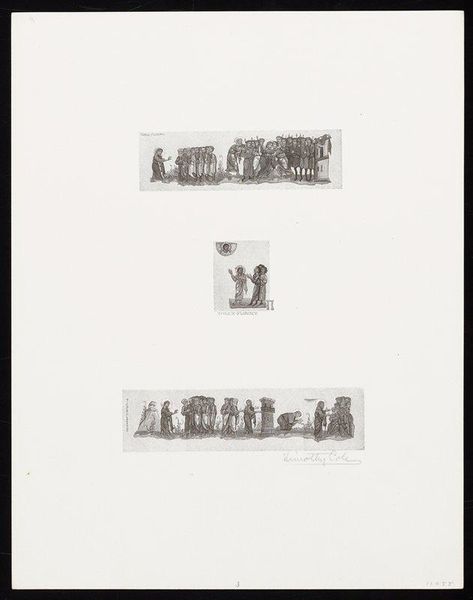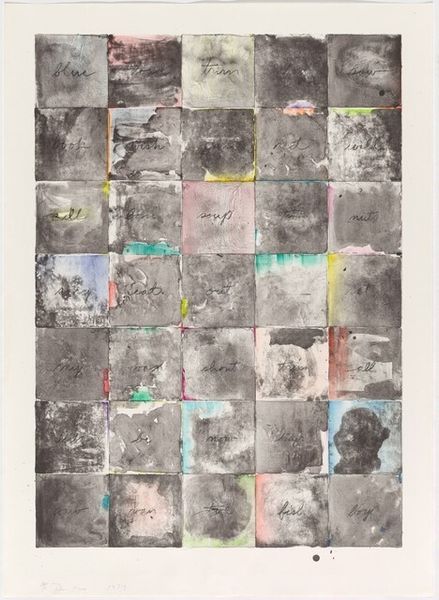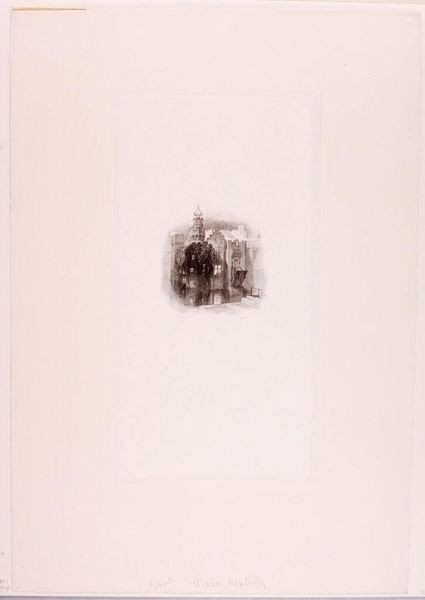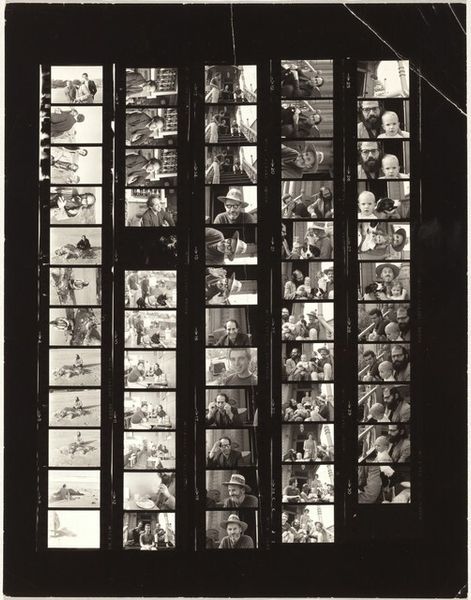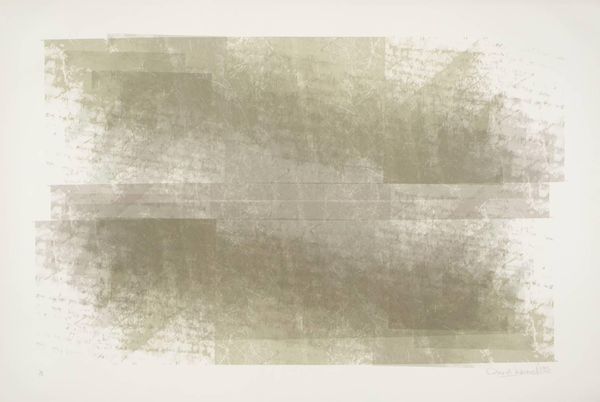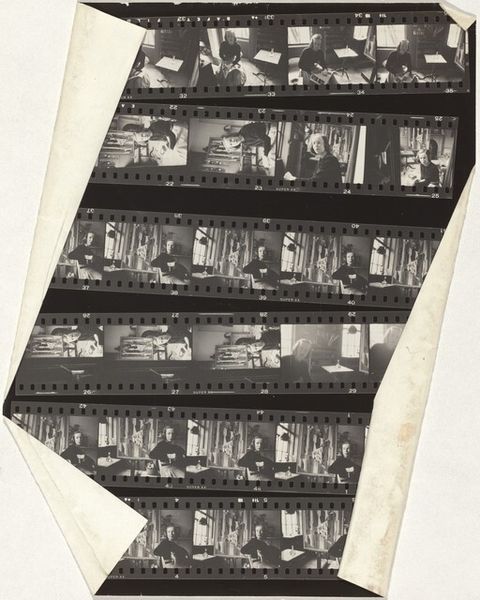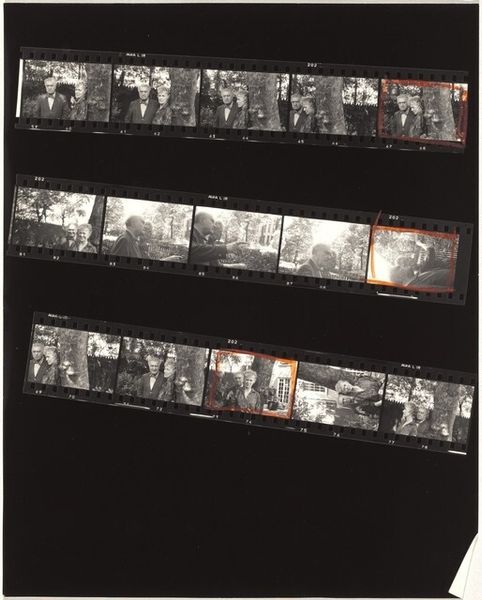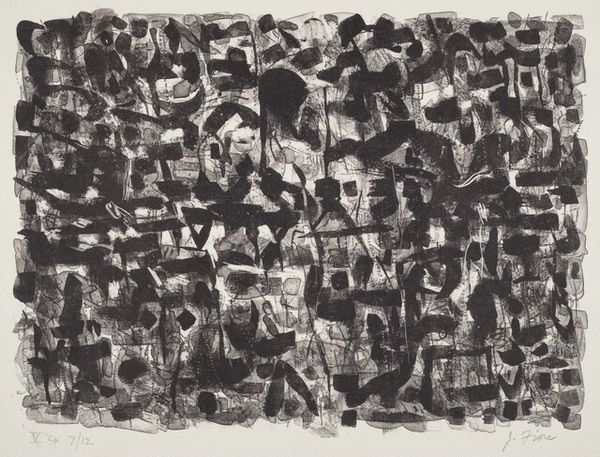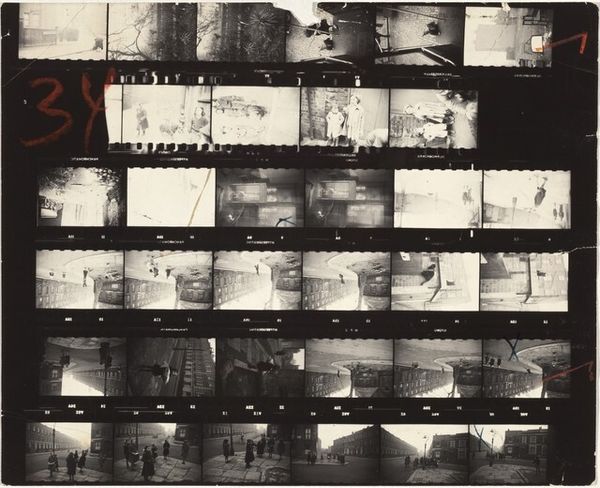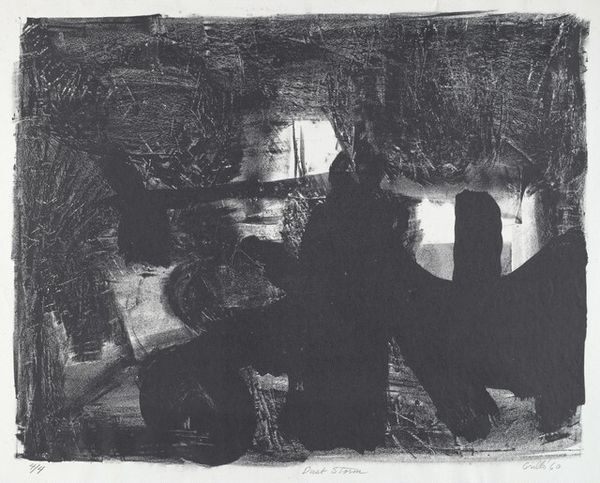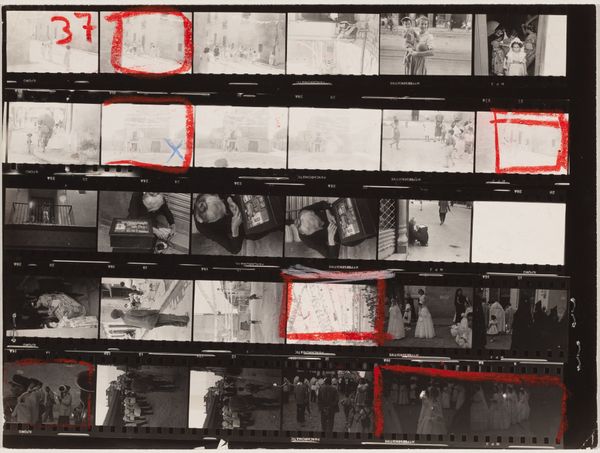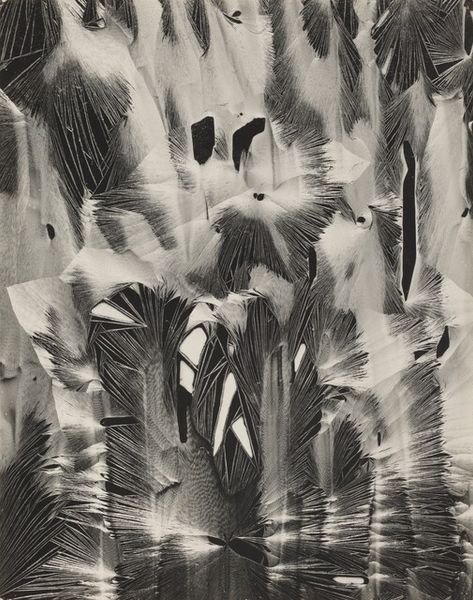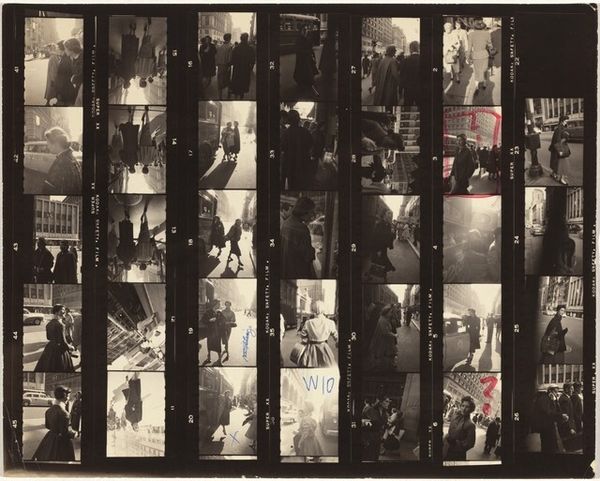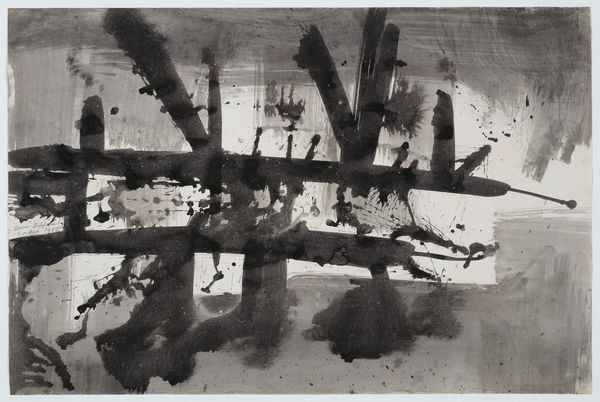
photography, photomontage
#
portrait
#
abstract expressionism
#
appropriation
#
photography
#
photomontage
#
group-portraits
#
pop-art
Dimensions: overall: 208.2 x 208.2 cm (81 15/16 x 81 15/16 in.)
Copyright: National Gallery of Art: CC0 1.0
Editor: Here we have Andy Warhol's "Let Us Now Praise Famous Men (Rauschenberg Family)" from 1962, made using photomontage. It's a fascinating piece! What immediately strikes me is how the repeated imagery gives the feeling of old film reels, or maybe a series of slightly altered snapshots. How do you interpret this work, given all the repetitions? Curator: Warhol is presenting a fragmented narrative here, like flickers of memory struggling to solidify. Think about the cultural memory tied to family portraits - what they represent, what they conceal. These repetitions...do they amplify that tradition or critique it? Consider the implications of showing and re-showing, each slightly different. Is there one clear reading, or is he suggesting something far more elusive? Editor: That’s a great point. I didn't consider how it might question the very idea of a family portrait as a stable representation. It's almost as if he's suggesting identity is fluid, changing with each re-presentation. Curator: Exactly. What emotions do you sense within you as you contemplate it? Does the symbolic resonance speak to personal experiences with similar representations? It's worthwhile questioning whether they provoke familiarity, indifference, or unease within you. Editor: Unease, definitely, there is something uneasy about how these historical images are repeated like this. It's as though he's commenting on the constructed nature of family and how we choose to remember things. I had never considered that the choice to repeatedly showcase a photo carries as much weight as not doing so. Curator: Warhol holds up a mirror, encouraging us to analyze our visual relationship with culturally constructed memory and repetition. Images gain strength when viewed many times; the power of recognition carries through time. Editor: That’s a totally new way of considering Warhol and this work for me. Thanks so much.
Comments
No comments
Be the first to comment and join the conversation on the ultimate creative platform.
